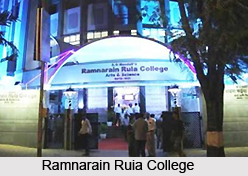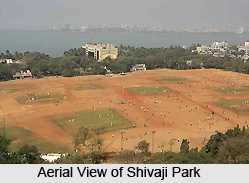 History of Dadar, in Maharashtra, dates back to 16th century, when there was a dominance of Portuguese. The area which presently comprises Dadar was previously, in 16th century, was called as lower Mahim owing to its location on the island of Mahim. This island forms one of the seven islands of Mumbai which during the entire Portuguese period served as the most significant one after Mumbai Island proper. In the year 1596, the Portuguese Franciscans constructed a church in this region which was named as Nossa Senhora de Salvacao. Presently the church is popularly known as Portuguese Church and serves as a prominent landmark of Dadar.
History of Dadar, in Maharashtra, dates back to 16th century, when there was a dominance of Portuguese. The area which presently comprises Dadar was previously, in 16th century, was called as lower Mahim owing to its location on the island of Mahim. This island forms one of the seven islands of Mumbai which during the entire Portuguese period served as the most significant one after Mumbai Island proper. In the year 1596, the Portuguese Franciscans constructed a church in this region which was named as Nossa Senhora de Salvacao. Presently the church is popularly known as Portuguese Church and serves as a prominent landmark of Dadar.
The first planned scheme in Mumbai was formulated as the Dadar-Matunga-Wadala-Sion scheme of 1899-1900. The plan was devised by the Bombay Improvement Trust for relieving the congestion that arose in the centre of the town after the plague epidemics of the 1890s. As per the survey plan around 60,000 people were to be housed in Sion-Matunga whereas the same number of people was also to be accommodated at Dadar-Matunga. The developments in Sewri-Wadala were set to house around 85,000 people.
 Some of the institutions were also shifted to Dadar under the CIT plan including King George School, currently a collection of many schools and known as IES` Raja Shivaji Vidyalaya, and Victoria Jubilee Technical Institute, presently called Veermata Jijabai Technological Institute. In the year 1937, Ramnarain Ruia College was founded whereas in 1939 Ramniranjan Podar College was established and they completed the transition of Dadar from a residential suburb to diverse neighbourhood. Both these colleges are under the administration of SP Mandali. Dr. Antonio Da Silva High School in Dadar was established during the British era in 1851 and is one of the oldest schools.
Some of the institutions were also shifted to Dadar under the CIT plan including King George School, currently a collection of many schools and known as IES` Raja Shivaji Vidyalaya, and Victoria Jubilee Technical Institute, presently called Veermata Jijabai Technological Institute. In the year 1937, Ramnarain Ruia College was founded whereas in 1939 Ramniranjan Podar College was established and they completed the transition of Dadar from a residential suburb to diverse neighbourhood. Both these colleges are under the administration of SP Mandali. Dr. Antonio Da Silva High School in Dadar was established during the British era in 1851 and is one of the oldest schools.
Shivaji Park and the various surrounding areas of the region got developed by the year 1937. This public space, Shivaji Park, played a significant stage later during the Indian freedom movement for the political drama which led to the independence of India. This park also unfolds the latter political history of Mumbai. The ground of the Shivaji Park also later gained fame as the cricket education ground. A number of renowned Indian cricket players such as Sanjay Manjrekar, Ajit Agarkar, Vinod Kambli, Sachin Tendulkar, Sandeep Patil, Sunil Gavaskar, Ajit Wadekar, Salim Durani, Vijay Hazare, Vinoo Mankad, Ashok Mankad and others have received their training and achieved expertise in this ground.
In 1948-50, the Sharadashram society as well as school was constructed here which forms one of the biggest landmarks of Dadar. Sharadashram society is accredited as the first registered society of Asia and the first society of the Mumbai city.



















